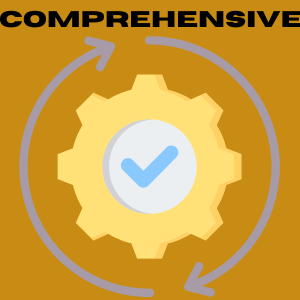Free Website Audit
(+91)9742991119
(+91)9742991119
Prashanth PC
March 22, 2024
Page performance refers to the process of improving how quickly a webpage loads and how smoothly it functions for users. This involves optimizing various elements of the webpage, such as images, scripts, and server responses, to minimize loading times and enhance user experience. By implementing strategies like optimizing images, reducing unnecessary scripts, and utilizing caching techniques, website owners can ensure that their page’s load faster and provide a more satisfying browsing experience for visitors.

Enhance page performance, we need to focus on several key areas. First, optimizing website speed is crucial for better user experience and search engine rankings. This involves minimizing page load times by compressing images, leveraging browser caching, and reducing server response times.
Improving mobile responsiveness is essential as more user’s access websites through mobile devices. Ensuring that the site is mobile-friendly and provides a seamless experience across various screen sizes is paramount.
Additionally, optimizing content for search engines by using relevant keywords, meta tags, and structured data markup can significantly boost organic traffic. Regularly monitoring and analyzing website performance metrics, such as bounce rate and conversion rate, allows us to identify areas for improvement and make necessary adjustments to further enhance page performance.
A Content Delivery Network (CDN) is among the top practices for boosting page performance. CDNs distribute website content across multiple servers worldwide, ensuring faster delivery to users regardless of their location. By caching content on servers closer to the user, CDNs reduce latency and improve loading times, enhancing overall website performance and user experience. Integrating a reliable CDN can significantly optimize website speed and efficiency.
Selecting the right SEO hosting plan is critical for enhancing page performance. A quality hosting plan ensures reliable uptime, fast loading speeds, and adequate resources to handle website traffic. Look for hosting providers that offer optimized servers, SSD storage, and robust security features. By choosing a hosting plan tailored to SEO needs, you can improve website performance, increase search engine rankings, and provide a better experience for users.
Migrating to a Content Management System (CMS) is a top strategy for enhancing page performance. CMS platforms like WordPress offer user-friendly interfaces, streamlined content management, and a plethora of plugins for optimization. By transitioning to a CMS, you can improve website flexibility, scalability, and speed. Additionally, CMS platforms often have built-in SEO features, making it easier to optimize content for search engines and boost overall page performance.
Employing a lightweight theme within a Content Management System (CMS) is a crucial step in enhancing page performance. Lightweight themes have minimal code and fewer features, resulting in faster loading times and improved user experience. By choosing a lightweight theme, you ensure that your website operates efficiently, even on slower internet connections or mobile devices. This optimization helps boost page speed, reduce bounce rates, and enhance overall site performance.
Reducing the number of plugins is essential for optimizing page performance. While plugins offer functionality, each one adds to the website’s load time and can cause compatibility issues. Regularly assess and remove unnecessary plugins to streamline your website. Prioritize essential plugins that are lightweight and well-maintained to minimize their impact on performance. By keeping the plugin count low, you ensure faster loading times and a smoother user experience for visitors.
Minifying JavaScript and CSS files is a vital step in optimizing page performance. By removing unnecessary spaces, comments, and formatting from these files, you reduce their size and improve loading times. Utilize minification tools or plugins to automate this process and ensure efficient file delivery to users’ browsers. Minifying JavaScript and CSS helps streamline website performance, enhance speed, and provide a better experience for visitors accessing your site.
Reducing unused JavaScript and CSS is crucial for boosting page performance. By eliminating unnecessary code, you decrease file sizes and improve loading times. Conduct regular audits to identify and remove any unused scripts or stylesheets from your website. This optimization technique ensures that only essential resources are loaded, leading to faster page rendering and enhanced user experience. Keeping JavaScript and CSS lean contributes significantly to optimizing website performance and overall efficiency.
Implementing GZIP compression is a key strategy for boosting page performance. GZIP compresses website files, such as HTML, CSS, and JavaScript, before they are sent to the user’s browser. This compression technique reduces file sizes, resulting in faster loading times and lower bandwidth usage. By enabling GZIP compression on your web server, you can significantly improve website speed and overall performance, leading to a better user experience for visitors.
Detecting 404 errors is crucial for optimizing page performance. These errors occur when a user tries to access a page that doesn’t exist, leading to a negative user experience and potential SEO implications. Implementing tools or plugins to monitor and detect 404 errors allows you to promptly identify and fix broken links or missing pages. By resolving these errors, you ensure smoother navigation for users and maintain a healthy website structure.
Reducing redirects is paramount for optimizing page performance. Each redirect adds extra time for the browser to fetch the correct page, resulting in slower loading times. Aim to minimize the number of redirects on your website by updating internal links and eliminating unnecessary redirects. By doing so, you streamline the user journey, decrease server requests, and ultimately improve website speed and performance for a better user experience.

Ensuring mobile-friendliness is essential for optimizing page performance. With the increasing use of mobile devices for browsing, it’s crucial to design websites that provide a seamless experience across various screen sizes. Implement responsive design techniques to adapt content and layout dynamically based on the user’s device. By making your website mobile-friendly, you enhance accessibility, engagement, and overall performance, catering to the preferences of a mobile-centric audience.
Reducing the number of HTTP requests is a fundamental strategy for optimizing page performance. Each element on a webpage, such as images, scripts, and stylesheets, requires an HTTP request to load. Minimize these requests by combining or eliminating unnecessary files, optimizing images, and using CSS sprites. By reducing the number of HTTP requests, you decrease load times and improve overall website speed, resulting in a better user experience for visitors.
Compressing all images and implementing lazy loading are key practices for optimizing page performance. Image compression reduces file sizes without sacrificing quality, resulting in faster loading times. Additionally, lazy loading delays the loading of offscreen images until the user scrolls to them, conserving bandwidth and improving initial page load speed. By combining these techniques, you enhance website performance, decrease load times, and provide a smoother browsing experience for users.
Reducing the DOM (Document Object Model) size is essential for optimizing page performance. A large DOM size can lead to slower rendering times and increased memory usage, particularly on mobile devices. To achieve this, simplify your HTML structure, minimize unnecessary elements, and avoid excessive nesting. By reducing the DOM size, you streamline the rendering process, resulting in faster page loading and improved overall performance for users.
Eliminating render-blocking resources is crucial for optimizing page performance. These resources, such as CSS and JavaScript files, delay the rendering of a webpage until they are fully loaded, causing slower page load times. To address this, prioritize critical resources, inline essential CSS, and defer non-essential JavaScript. By minimizing render-blocking resources, you can expedite page rendering and improve overall website speed, resulting in a better user experience.
Implementing website caching is essential for optimizing page performance. Caching stores frequently accessed website data, such as HTML pages and images, on the user’s device or a server. This reduces the need for repeated requests to the server, resulting in faster loading times for returning visitors. Utilize browser caching and server-side caching techniques to store and deliver cached content efficiently. By leveraging caching effectively, you can enhance website speed, decrease server load, and improve overall performance for users.
Utilizing video formats for animated content is a savvy strategy to boost page performance. Videos typically have smaller file sizes compared to GIFs, leading to quicker loading times. Convert animated content into video formats like MP4 or WebM to optimize delivery across various devices and networks. Additionally, videos offer better compression and quality control, ensuring a smoother viewing experience. By adopting video formats for animated content, you enhance page performance, reduce bandwidth usage, and provide users with engaging visual experiences.
Employing passive event listeners is a smart approach to enhance scrolling performance on web pages. By attaching event listeners with the { passive: true } option, you prevent the default behavior of event listeners from blocking scrolling. This reduces junk and improves responsiveness, especially on mobile devices. Utilize passive listeners for scroll events to streamline the scrolling experience, resulting in smoother and more efficient navigation for users.
Minimizing the use of third-party images is essential for optimizing page performance. Each additional image from external sources introduces additional HTTP requests, potentially slowing down page loading times. Evaluate the necessity of third-party images and consider hosting them locally if possible. By reducing reliance on third-party images, you decrease dependency on external servers and mitigate the risk of downtime or slowdowns from external sources. This optimization helps streamline page loading, improving overall performance and user experience.
Adding expires headers is a crucial step in optimizing page performance. These headers instruct the browser to cache specific resources, such as images, CSS, and JavaScript files, for a specified period. By setting expiration dates in the headers, you reduce the number of HTTP requests made to the server, as the browser can serve cached content instead. This optimization technique improves page loading times and reduces server load, ultimately enhancing the overall performance and user experience.
PCSEO promises increased visibility by placing your business at the forefront of local search results. Customized for regional impact, this solution optimizes your online presence and helps your business stand out. Focuses on optimizing to make your business more discoverable to potential customers in your area, thus increasing traffic, engagement, and ultimately money.
PCSEO Specializes in SEO strategies to increase your rankings from smolder to smolder to grow your business organically, drive more traffic, and focus on your business. Save on advertising costs and avoid future expenses with good SEO. Start using our SEO Services to grow your business smartly and easily.

Our SEO firm takes your business to a top-10 ranking within a specified timeframe. We'll establish SEO objectives aligned with your key performance indicators (KPIs)

We'll provide you with an SEO roadmap detailing our actions and a 24/7 reporting dashboard to monitor our progress and performance

SEO can be cost-effective without compromising effectiveness. A considerable portion of our clientele comprises small businesses operating on limited budgets

We take care of all aspects influencing your ranking, including website troubleshooting, integrating social media, and creating content to ensure optimal performance